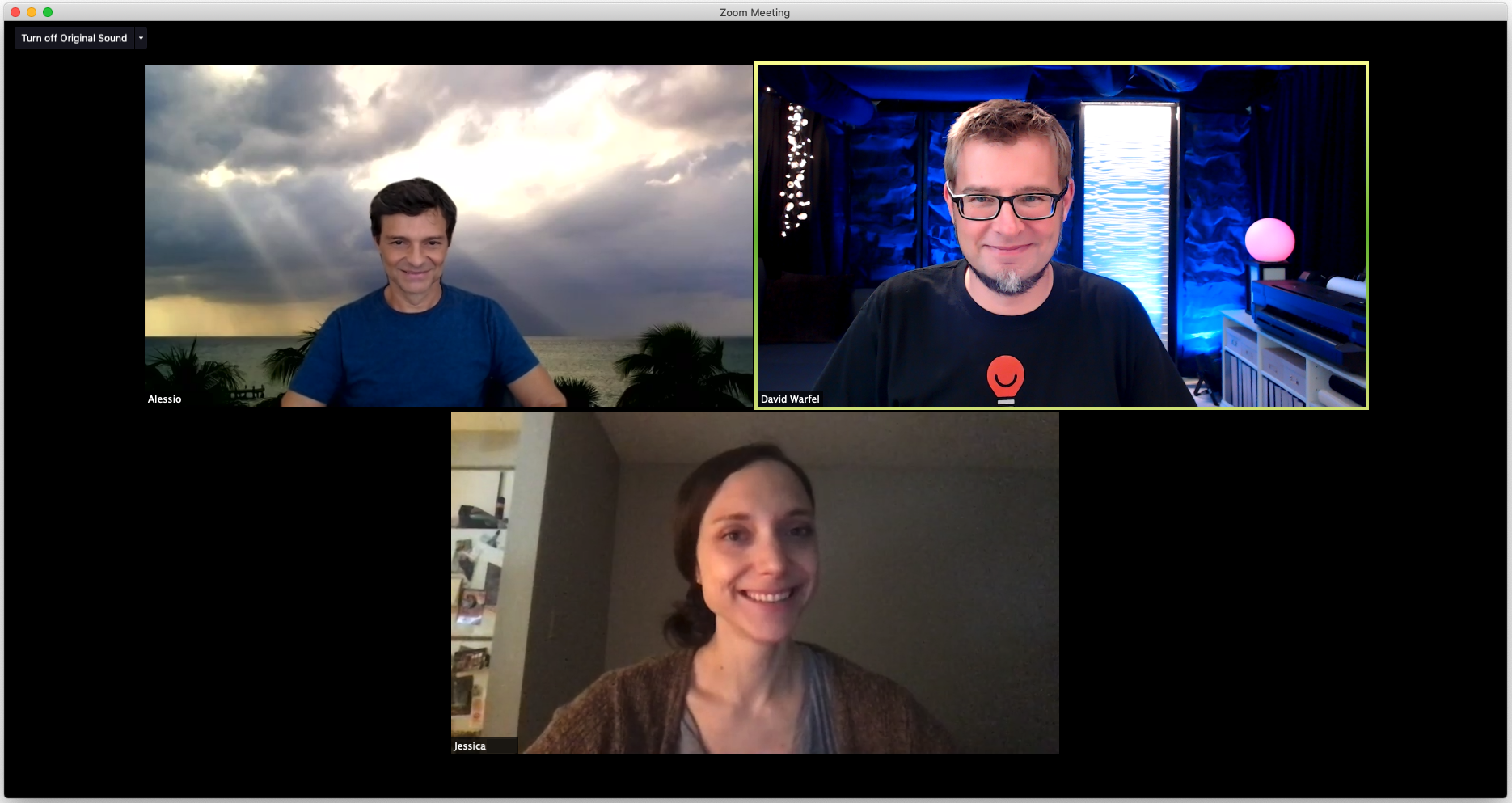Whew. It’s been hard to find time to blog the past few months. I can blame that on the pandemic, but that is only partially true.
I’ll blame it on Zoom instead.
Our design team is spread across three time zones and six states, and we rely on remote communication tools like Zoom for continual chats, video calls, and phone calls. We switched to Zoom from another platform over a year ago and, honestly, our clients were a little reluctant to use the platform.
Then COVID-19 hit and Zoom went from a few million users to over 200,000,000 in one month. Suddenly, none of our clients objected to Zoom. Instead they preferred it over meeting in person. One client told me a few months in that he felt proud he knew Zoom before any of his peers did- and he knew Zoom because we were designing lighting for his home. That made me smile.
What does that have to do with keeping me from the blog? Well…not much…except that I have been on Zoom calls for seven and eight hours a day lately. That doesn’t leave much time for writing. But it does give me hours and hours to ponder lighting for video conferencing, so I might as well share what I’ve learned.
Let’s start by analyzing what most people are doing for Zoom, which can be summarized as “not much at all.” I drafted a few of our designers as examples:
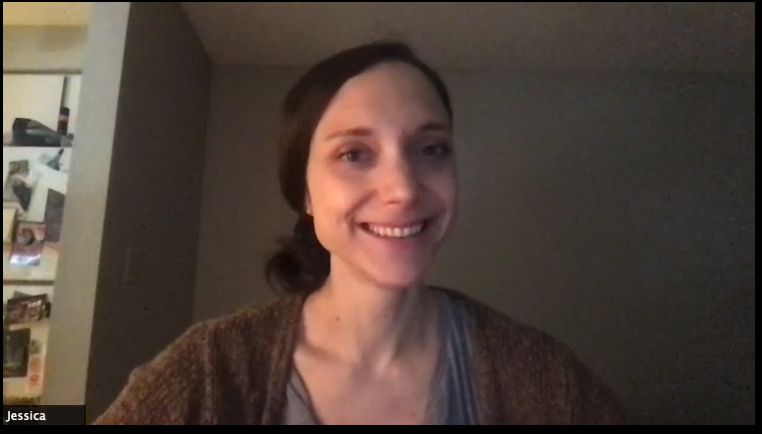
Jessica is doing what millions of us have been doing the past few months: working from a kitchen table or a desk tucked into a corner of our home. She has a desk lamp illuminating one side of her face and a neutral wall behind. Nothing unusual here. Just note the dark shadows on the right side of her face and the way her shoulder and hair look black.
Alessio did not want us to see his beige walls, often because he has retreated to a bedroom to escape the noise of his children “schooling at home.” This is a plight faced by millions as well. How do you work at home and Zoom when there are two working spouses and several Zooming kids doing school? We need to rebuild our houses with six soundproof studios. Hah.
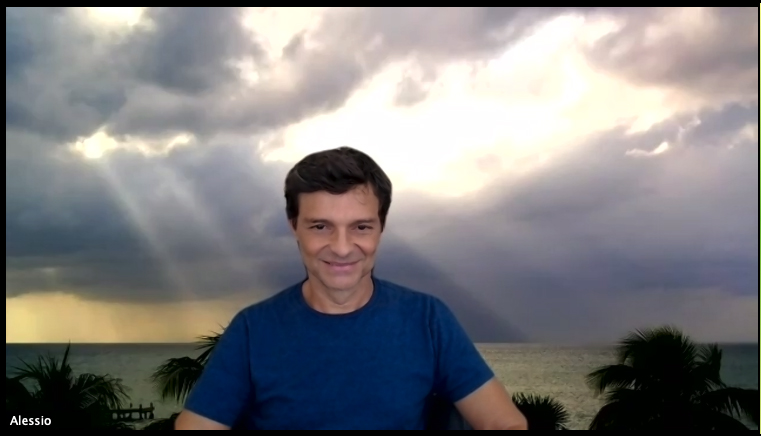
Alessio chose a zoom background from his travels and it illustrates another important lighting concept: Our eyes are drawn to the brightest spot in our vision. In this case, it is the opening in the clouds behind Alessio’s head, and the contrast makes Alessio look dark. Again, nothing unusual here. We’ve all seen the swaying palm trees backgrounds and collectively spent a million hours swapping digital backgrounds at the beginning of Zoom meetings. “Hey, cool background” has replaced “can you believe the weather??” as the typical conversation opener. A green screen (really just a green sheet of fabric) and a darker image would help.
I feel a little weird asking you to look at me, but here’s what I look like on Zoom:
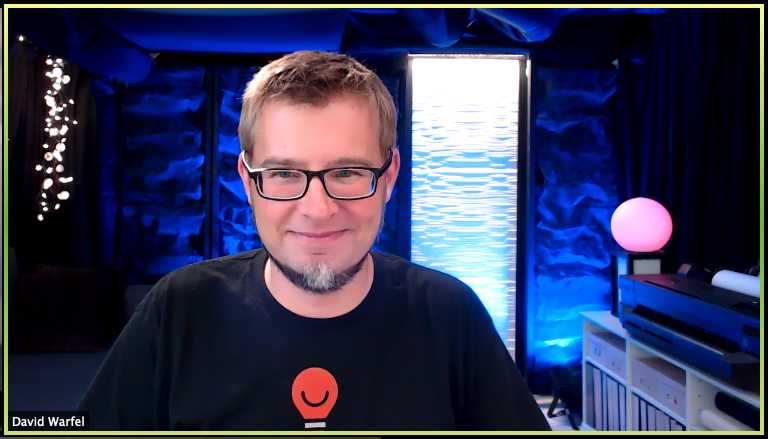
This is a shot from a few weeks ago, and I’ve improved my setup recently (photos below). A journalist interviewing me commented they had never seen anyone looking so clear. That’s partly a 1080p camera, partly a software piece that allows me to adjust gain, white balance, and other variables. And it is partly lighting.
The keys to looking good on Zoom are not new- we’ve been using them on screens for decades. Television and film utilize lighting professionals religiously, and there are three key concepts I’ll focus on here: Soft face lighting, strong backlighting, and recessive backgrounds.
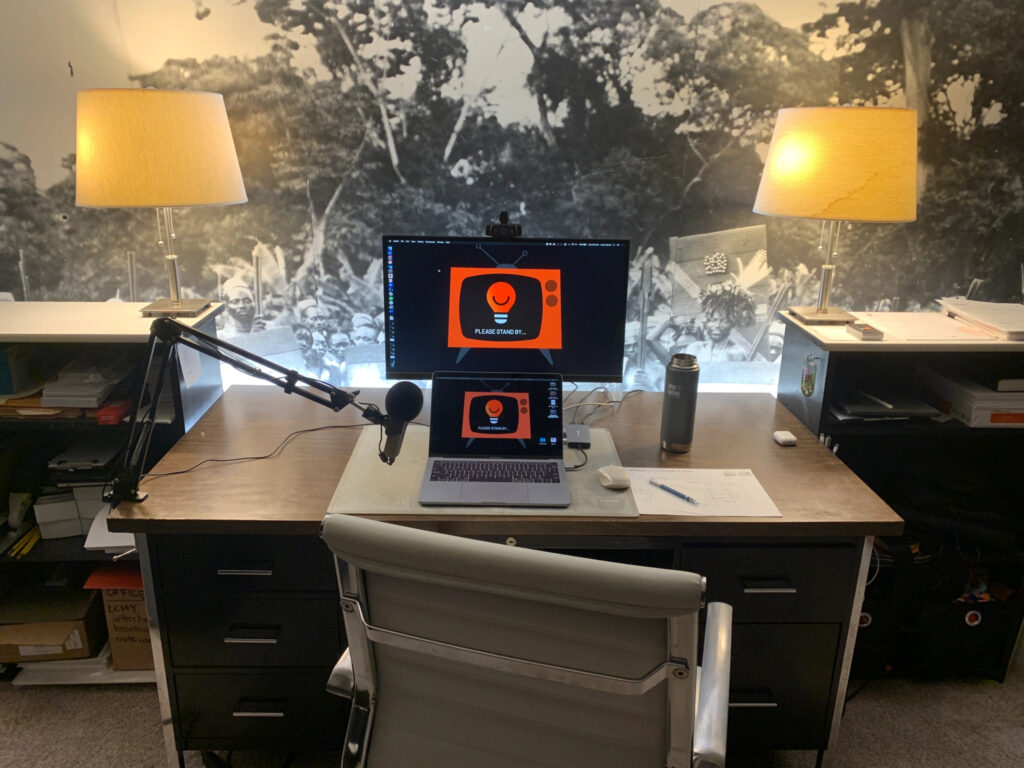
SOFT FACE LIGHTING
First of all, television and photography studios often use something called a Soft Box to illuminate faces well. It’s a big light with soft white fabric cover and, while I own a few and they work great, I don’t really want to feel like I’m on stage all day. I have two lamps by my desk, elevated so that the bottom of the shades is at eye level, and they work just about as well. I also have light of a cooler color temperature below my desk illuminating the strange mural that we inherited when we moved into the home. The two color temperatures blend to a good neutral white and my face appears evenly lit with few deep shadows.
To get this look at your desk, use lamps with soft shades on both sides of you. Want to go pro? Get one of these.
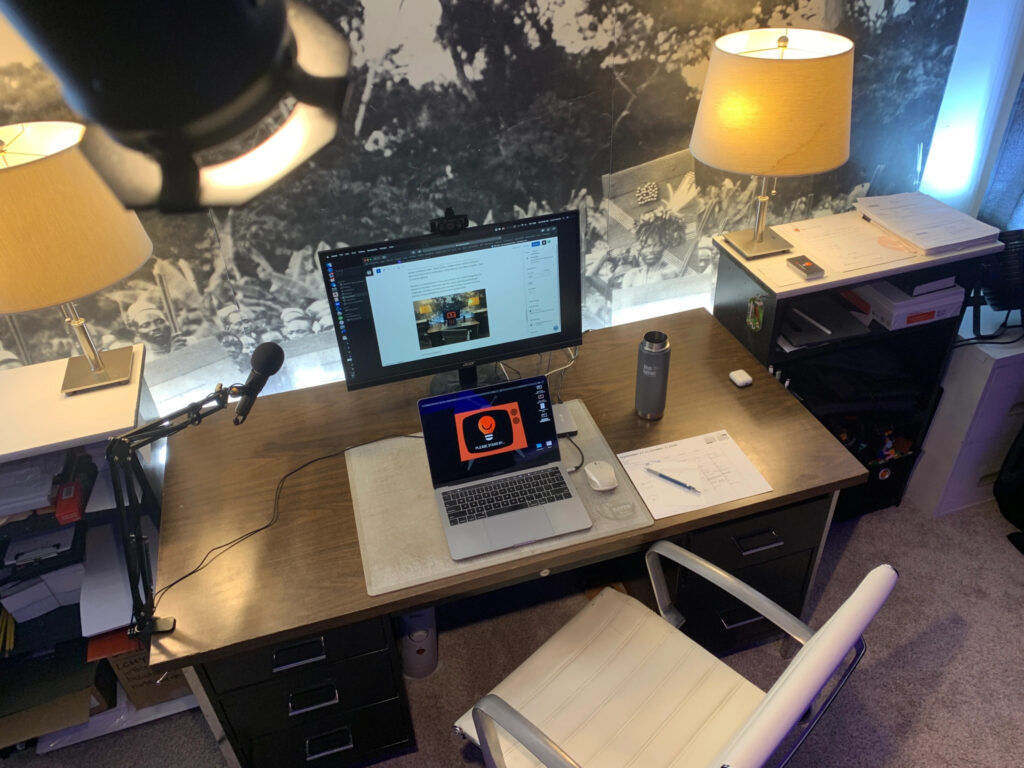
STRONG BACKLIGHTING
The second concept of decent lighting for video of film is to backlight the “talent” so that their hair and shoulders are defined and pulled out from the background. This can be a little harder to accomplish at home because it needs to come from a very precise angle: just behind you and above you. I happen to have a 10×10 storage unit full to the rafters with lighting gear, so I just grabbed a $20 tiny spotlight and added it where needed. Look back at Jessica’s hair and shoulders and how the disappear and compare them to mine.
How can you do this at home? Head to your local hardware store and buy a super-cheap clip light used on construction sites. Put in a PAR20 spotlight bulb and clip it above and behind you. Voila. I once did an entire series of online classes using a clip light just like that, and it worked great.
RECESSIVE BACKGROUNDS
Ever wondered why the backgrounds of so many new shows are blue? Nope? Mostly we don’t pay attention, but someone has. Blue is a recessive color that leads to a feeling of distance (think sky) and many television studios are tiny spaces. Blue helps them feel bigger to us, the viewers.
Backgrounds need to be darker than our faces our it will be uncomfortable to look at us, as in Alessio’s snapshot. I have seen many Zoomers sitting in front of windows so that it makes them so hard to see. That’s great light for working but terrible for video.
I literally covered the portion of my office behind me with black fabric, but left the forward half of the room white so I would not feel like I work in a cave. Then I went back to the storage unit, grabbed another pile of gear, and added color-changing spotlights, grazing linear fixtures, a chandelier, and framing projector for a framed photo.
How do you do that at home? Oof. It’s a little harder, but if you can make your background darker than your face, you’ll be halfway there. Keep lamps out of the background or put them on dimmers and lower their intensity. Consider off-camera light sources for just a glow behind you.
That’s it. Soft face lighting, strong backlighting, and a darker, recessive background. I could keep writing on this subject for hours, but I have to hop on a Zoom call….
